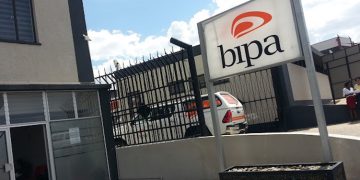
Namibia has missed its target of becoming a regional logistics hub by 2025, as outlined in the Fourth National Development Plan (NDP4).
A revised master plan is now under review, following delays in rail, aviation, and regulatory infrastructure.
This comes as the original phased strategy envisioned short-term expansion by 2020 and medium-term evolution into a regional distribution centre by 2030.
“We are now in 2025, and I can assure you we are not there yet. So for that reason, we are revising the master plan because there are quite a number of developments that are still pending. Some of our railway infrastructure is lacking, and in the aviation space, there’s also a lot to be done,” said Gilbert Boois, Project Manager for the Logistics Hub at the Walvis Bay Corridor Group.
The initial phase, known as the “Transport Corridor,” aimed to remove bottlenecks and grow Namibia’s share in the international transport market.
According to the plan, this included scaling capacity by 2.5 times by 2020. The second “Economic Corridor” phase targeted Namibia’s transformation into a regional supply and distribution depot, ultimately contributing to Vision 2030 and industrialisation.
He added that while port infrastructure has progressed, with private concessions now operating under a landlord model, other key components such as rail networks, border facilities, and aviation remain underdeveloped.
“When you envisage positioning yourself as a logistics hub, you have to have all these different elements. First and foremost, you need to have an efficient port. Of course, you have to think about your intermodal setup—your road, your rail, your border infrastructure, regulatory environment, policy environment, and legislative environment,” said Boois.
Namibia’s corridor network consists of four main routes—three via Walvis Bay and one via Lüderitz.
These connect to regional markets, with copper, fertilisers, and consumables among the main commodities moved through the system.
“Logistics is essentially a volume game. It’s just a volume game. And it’s really about how you drive volumes in order to achieve the desired economies of scale,” Boois explained.
Governance of the hub development includes oversight from Cabinet, steering committees, and mixed-sector working groups.
“In 2015, we started with a logistics hub initiative that we are spearheading on behalf of the Namibian government. It’s not our project. It’s a Namibian government project that we are implementing on their behalf,” noted Boois.
The Walvis Bay Corridor Group serves as the main implementing agency and coordinates efforts with both public and private actors.
“These working groups consist of public and private sector stakeholders. So it really holds us accountable in terms of how we track progress and achievements in this endeavour,” said Boois.













